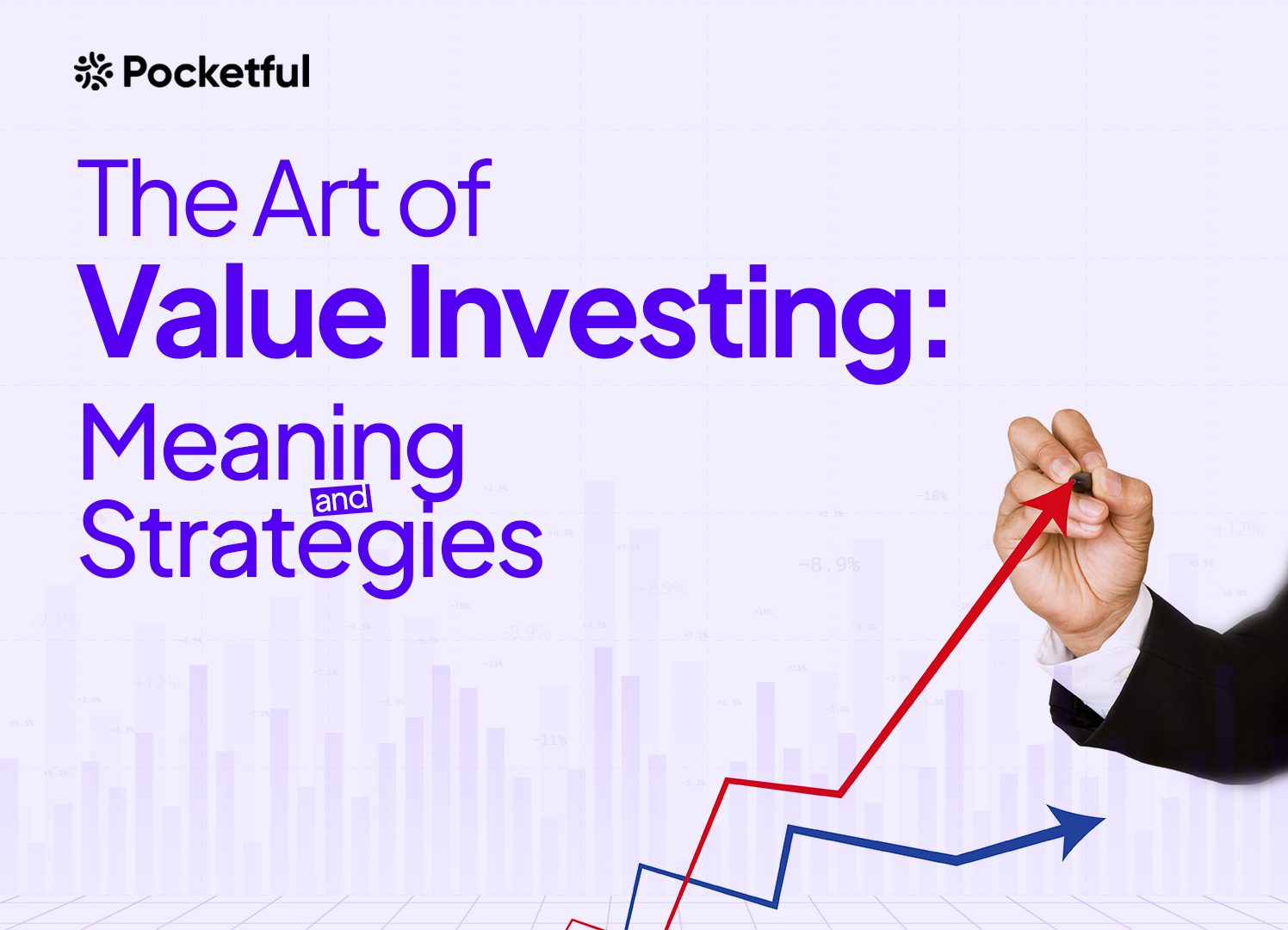| Type | Description | Contributor | Date |
|---|---|---|---|
| Post created | Pocketful Team | Feb-19-24 | |
| Add new links | Nisha | Mar-12-25 |
Read Next
- Rakesh Jhunjhunwala Portfolio 2025: Top Holdings & Strategy
- BankBeES vs Bank Nifty – Key Differences
- Current Ratio vs Quick Ratio Key Differences
- Best REIT Stocks in India 2025
- Best Data Center Stocks in India 2025
- Best Rare Earth Stocks in India
- Top 10 investment banks in India
- What Is iNAV in ETFs?
- Best Investment Options in India 2025
- Best Energy ETFs in India 2025
- Radhakishan Damani Portfolio 2025: Stocks & Strategy Insights
- Best SEBI Registered Brokers in India
- Best Air Purifier Stocks in India
- Best Space Sector Stocks in India
- Gold Rate Prediction for Next 5 Years in India (2026–2030)
- Difference Between Equity Share and Preference Share
- Vijay Kedia Portfolio 2025: Latest Holdings, Strategy & Analysis
- Raj Kumar Lohia Portfolio 2025: Holdings, Strategy & Analysis
- How to Earn Passive Income Through Dividend-Paying Stocks in India
- Top 10 Richest Investors in the World 2025 – Net Worth, Key Investments & Strategies
- Blog
- the art of value investing meaning and strategies
The Art of Value Investing: Meaning and Strategies

In the hustling world of finance, where trends shift and fortunes change quicker than ever, one strategy stands the test of time and is known as value investing.
This approach has guided investors to discover gems in the rough for decades. But is value investing still relevant in an age of instant satisfaction and flashy IPOs?
In today’s blog, we will be analysing the concept of value investing and how to assess a company’s true worth.

Concept
Value investing is an investment philosophy based on buying stocks that are trading below their intrinsic value. Intrinsic value represents the true worth of the company estimated by analysing its fundamentals, such as financial statements, business models, and industry trends.
The concept of value investing functions on the following principles,
Undervaluation:
Value investors generally look for stocks that are trading less than their intrinsic value and offering a discount.
Margin of Safety:
MoS is when an investor buys below intrinsic value, providing a buffer against unforeseen events and protecting against overpaying.
Contrarian Approach:
Value Investors are predisposed to buy stocks out of favour with the market, betting the market will eventually recognise the true value.
Long-term Investing:
Focusing on holding stocks for an extended period and waiting for the market to catch up with their intrinsic value.
Read Also: Intrinsic Value vs Book Value
Benefits
- The core advantage of value investing lies in its ability to control market inefficiencies. Recognising and buying undervalued stocks with a margin of safety can help investors achieve returns that exceed the market average over the long term.
- Value investing inherently emphasizes on buying stocks trading below their intrinsic value. This helps create a buffer against downturns, which means that even if the market price falls, it is less likely to fall below the intrinsic value.
- Value investors generally prefer companies with strong financial health, stable business models and consistent cash flows. This focus on fundamental strength helps preserve capital by investing in companies with a higher chance of fighting market storms and keeping themselves financially sound.
- Value investing encourages a disciplined and research-driven approach to investment in the market. The focus is on fundamental analysis, and emotional decisions based on market sentiments are avoided, eventually preventing investors from getting into impulsive trades.
- Additionally, value investors often adopt a contrarian approach, which can lead to significant gains if markets correct their mispricing.
- Value investing also offers emotional benefits. Investors can avoid the anxiety and stress linked with reactive trading decisions and short-term market noise by focusing on research and analysis.
Risks
- The success of value investing hinges on finding market inefficiencies. If the market is truly efficient, recognising undervalued stocks might be difficult.
- Value investing demands patience and discipline from the investors. It might take a long time for the market to identify a company’s true value.
- Going against the market sentiment and buying unpopular stocks can be emotionally challenging, and investors need to stick to their convictions.
- Not every cheap stock is a good investment. Some companies appear undervalued but may have legitimate reasons for low prices, such as poor management, structural decline or hidden liabilities. These value traps can lead to losses and destroy the investor’s confidence if not identified correctly.
- Broader economic trends such as regulatory shifts, recession or any industry-specific changes can also impact even the fundamentally strong companies.

Key Metrics
Some of the key metrics that an investor needs to look for are as follows.
Price-to-Earnings Ratio (P/E Ratio)
This ratio tells us how much an investor would have to pay to own a piece of a company based on how much profit the company makes. A lower P/E ratio indicates that a stock is undervalued as we would have to pay less to gain the profit. However, it is essential to analyse and compare the P/E to the company’s industry average and historical P/E ratios.
For example, Consider two companies
Company A
Stock price – INR 50
EPS – 5
PE Ratio – INR 50/5 = 10
Company B
Stock Price – INR 100
EPS – 20
PE Ratio – INR 100/20 = 5
Company A is trading at a higher multiple of their earnings. Thus, Company B is undervalued when compared to A.
Debt-to-Equity Ratio
This ratio compares the company’s total debt to its equity. A lower debt-to-equity ratio shows that a company is less risky in financial terms as they don’t have to worry much during reduced margins.
For example, consider two companies
Company A
Debt – INR 1 lakhs
Equity – INR 2 lakhs
Debt-to-Equity Ratio – INR 1 lakhs/ INR 2 lakhs = 0.5
Company B
Debt – INR 3 lakhs
Equity – INR 1 lakhs
Debt-to-Equity Ratio – INR 3 lakh/INR 1 lakh = 3
With a Debt-to-Equity ratio of 0.5, Company A has less debt relative to its equity, indicating a more conservative financial structure and low financial risk.
On the other hand, Company B has a debt-to-equity ratio of 3, reflecting more debt than its equity, indicating a higher financial risk.
Price-to-Book Ratio (P/B Ratio)
This ratio compares a company’s stock price to its book value per share. A low P/B ratio indicates that the stock is undervalued.
For example, consider two companies
Company A
Stock Price – INR 20
Book Value per share – INR 10
P/B ratio – 20/10 = 2
Company B
Stock price – INR 40
Book value per share – INR 20
P/B Ratio – 40/20 = 2
While Company A trades at INR 20, Company B trades at INR 40. B is expensive and overvalued at a superficial level, but after calculating the P/B ratios, they both seem equally valued in the market.
Return on Equity (ROE)
This metric measures a company’s ability to generate profit from the equity of shareholders. Higher ROE indicates a well-organized use of capital.
Consider a company named ABC Technologies with an income of INR 10 Lakhs and shareholder equity of INR 50 Lakhs.
ROE – Income/shareholder’s Equity = INR 10 lakhs/INR 50 lakhs = 0.2
This shows that for every rupee provided by the shareholders, ABC Technologies generates 20% of profit.
Discounted Cash Flow (DCF)
This model helps estimate the present value of the company’s future cash flow, allowing investors to analyse the stock’s intrinsic value.
For example, to estimate a company’s intrinsic value using a DCF model, an investor needs to forecast the future cash flows, which is the core part of the model, and to forecast the future cash flow, an investor first needs to.
- Project financial statements by analysing historical track records.
- Use applicable assumptions to predict Cash Flows for coming years and estimate the terminal value of the company using different methods.
- Then, determine the appropriate discount rate to reflect the risk linked with the company and the projected cash flows.
- Now, the investor can use the chosen discount rate to bring each year’s forecasted Cash Flows back to its present value (PV) and then add the PV of all the future cash flows to arrive at the present value of all future cash flows.
- Add the present value of the terminal value to the present value of free cash flows to get the estimated intrinsic value.
*(Remember that real-world DCF models involve complex adjustments and calculations).
PEG Ratio
This ratio compares the company’s P/E ratio to its expected earnings growth rate. A lower PEG ratio indicates that a stock is undervalued relative to its growth potential.
For example, Consider 2 companies
Company A
P/E Ratio – 20
Expected EPS growth rate – 10 %
PEG Ratio – 20/10 = 2
Company B
P/E Ratio – 15
Expected EPS growth rate – 5%
PEG Ratio – 15/5 = 3
A PEG ratio closer to 1 indicates undervaluation relative to the company’s growth potential (like company A).

Additional Tips for Value Investing
- Do not choose cheap stocks, look for quality companies with strong financials that are trading at a discount.
- Understand and analyse the company’s business model and competitive landscape before investing.
- It may take time for the market to identify the worth of an undervalued company. So, patience and confidence in our choices are extremely important.
Value Investing v.s. Growth Investing
- Value investing seeks stocks currently trading below their intrinsic value, whereas growth investing seeks stocks with high growth potential, irrespective of the current valuation.
- Value investing uses fundamental analysis, including metrics like P/E ratio, P/B ratio, etc., while growth investing uses growth metrics like revenue and sales growth, market share, etc.
- The former is used for longer time-frames and needs patience, while the latter can be used in medium timeframes.
- Features of value investing include reduced downside risk and capital preservation, whereas features of growth investing include the potential for significant returns with comparatively higher risk.
Value Investing for Beginners
- Grasp the core principles and understand the philosophy of value investing along with the metrics used to identify them.
- Make financial statements a friend and analyse the industry trends carefully.
- Beginners should avoid making impulsive decisions and should stick to their investment goals.
Read Also: Explainer on Cigar Butt Investing: Features, Advantages, Limitations, and Suitability Explained
Conclusion
To wrap it up, only invest money you can afford to lose because past returns do not guarantee future success, and not every cheap stock is a good investment. Value investing isn’t a get-rich-quick scheme fuelled by speculation. Instead, it is a research-driven approach built on patience and deep fundamental analysis.
Frequently Asked Questions (FAQs)
Why should I consider value investing?
Value investing focuses on strong fundamentals and protects from market downtrends.
Isn’t the concept of value investing outdated in the fast-paced market?
No, because value investing helps you discover undervalued gems.
Is value investing risky?
Remember that every investment comes with a risk. Every investor needs to focus on thorough research and diversification of their portfolio.
How do I get started with value investing?
Practice fundamental analysis and gradually add individual stocks to your portfolio while analysing their trends.
Is value investing right for me?
It depends on your specific risk tolerance and investment goals.
Disclaimer
The securities, funds, and strategies discussed in this blog are provided for informational purposes only. They do not represent endorsements or recommendations. Investors should conduct their own research and seek professional advice before making any investment decisions.
Article History
Table of Contents
Toggle